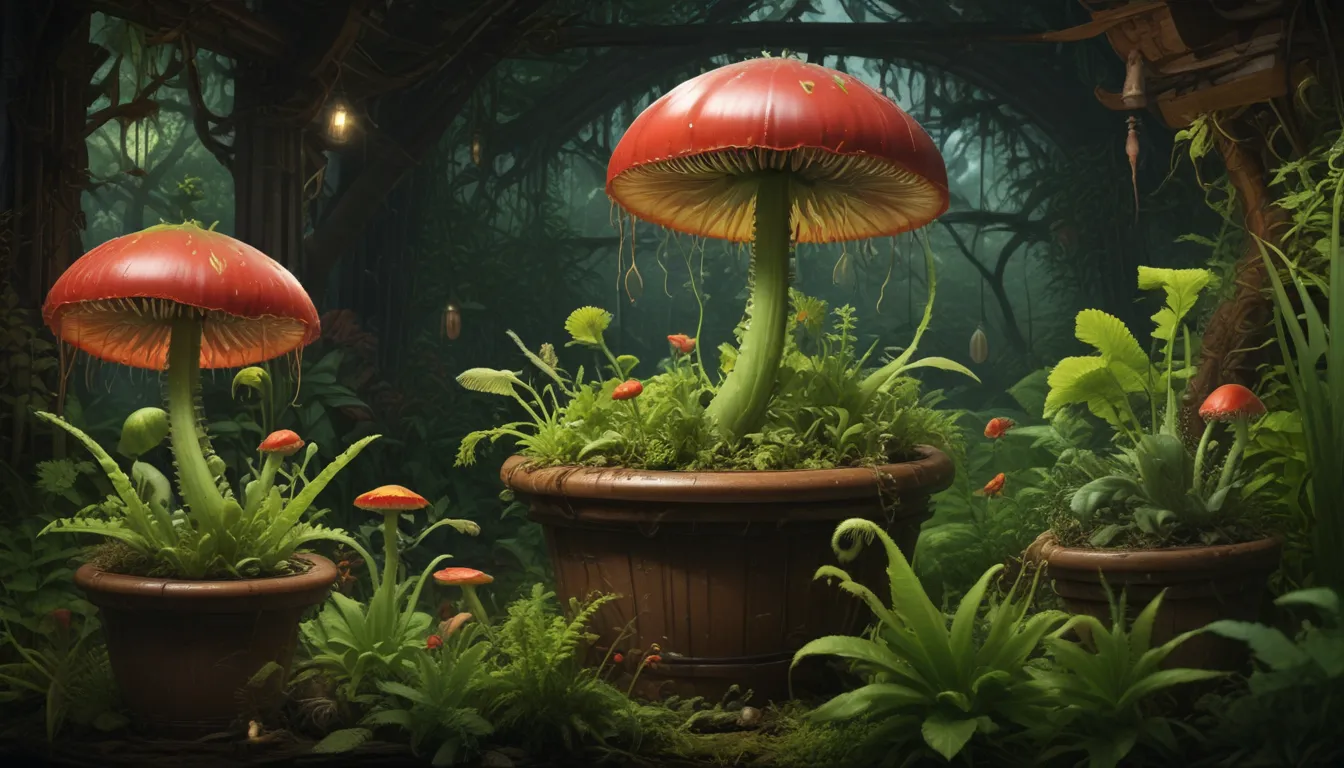How to Successfully Encourage a Venus Flytrap to Close: A Comprehensive Guide

The Venus flytrap, known scientifically as Dionaea muscipula, is truly a marvel of nature. With its gaping red mouth and menacing jaws, it’s no wonder it captures the imagination of many. If you’re looking to witness this incredible plant in action, you’ve come to the right place. In this guide, we’ll delve into the fascinating world of Venus flytraps and explore how to encourage them to close. So buckle up and get ready for an exciting journey through the plant kingdom!
Unveiling the Secrets of the Venus Flytrap
Before we dive into the nitty-gritty details of how to make your Venus flytrap close, let’s take a moment to appreciate the cultural requirements of these unique plants. Venus flytraps are native to the bogs of North and South Carolina, thriving in USDA Hardiness Zones 7 to 10. However, with proper care, they can also be grown indoors as houseplants in any zone.
To create the perfect environment for your Venus flytrap, here are some key cultural requirements to keep in mind:
- Light: Venus flytraps thrive in full sun to part shade.
- Soil: They prefer consistently moist, acidic, nutrient-poor soil. A mix of sphagnum peat moss and sand or vermiculite works well.
- Temperature: Ideal growing temperatures range from 70 to 95°F during the growing season.
- Humidity: Maintain moderate humidity levels of around 50%.
- Watering: Water sparingly during the dormant season and keep the soil moist during the growing season.
Understanding these fundamental requirements will lay the foundation for a healthy and happy Venus flytrap.
Unlocking the Carnivorous Behavior
What sets the Venus flytrap apart from other plants is its unique carnivorous behavior. These plants have evolved to attract and consume insect prey as a source of nutrients, particularly nitrogen. When an unsuspecting insect triggers the sensitive trigger hairs on the leaves, a fascinating chain reaction is set in motion.
Here’s a glimpse into the carnivorous behavior of the Venus flytrap:
1. Thigmonasty: The trigger hairs are stimulated, causing the leaves to close.
2. Digestion: Enzymes are produced to break down the captured prey.
3. Reopening: After capturing prey, the trap may reopen, ready for its next meal.
4. Maintenance: Remove dead traps to redirect plant energy towards new growth.
By understanding these intricate processes, you can better appreciate the remarkable mechanisms at play in the Venus flytrap’s quest for survival.
Unraveling the Science Behind the Venus Flytrap
The Venus flytrap’s intriguing behavior has captivated scientists for centuries. Early studies on electrical impulses in the plant led to groundbreaking discoveries about its trigger response. Today, researchers continue to explore the complex cellular mechanisms that govern the Venus flytrap’s unique abilities.
Key scientific insights into the Venus flytrap include:
– Electrical signaling: Rapid electrical impulses trigger leaf closure.
– pH requirements: An ideal pH of 4.5 is optimal for trigger response.
– Biomimetic applications: Nature-inspired robotics draw inspiration from the Venus flytrap’s mechanisms.
By delving into the scientific underpinnings of the Venus flytrap, we gain a deeper appreciation for its evolutionary adaptations and survival strategies.
Provoking the Trigger Response: Tips and Tricks
For enthusiasts looking to witness the Venus flytrap in action, there are several ways to encourage it to close. By creating an environment that mimics its natural habitat and providing the right stimuli, you can increase the likelihood of witnessing this captivating behavior.
Here are some tips to provoke the trigger response in your Venus flytrap:
– Nutrient-poor soil: Ensure your plant is growing in acidic, nutrient-poor soil.
– Consistent moisture: Keep the soil moist, mimicking bog-like conditions.
– Ample sunlight: Provide bright light or indirect light for optimal growth.
– Avoid fertilizers: Well-fed plants may not exhibit trapping behaviors.
– Introduce live insects: For a firsthand experience, hand-feed small insects to stimulate closure.
– Gentle stimulation: Use a cotton swab to nudge trigger hairs gently for a simulated response.
By following these strategies, you can increase your chances of observing the Venus flytrap in action and gain a deeper understanding of its carnivorous behaviors.
Embrace the Marvel of Carnivorous Plants
In conclusion, the Venus flytrap stands as a testament to the wonders of the natural world. Its carnivorous adaptations and unique mechanisms showcase the ingenuity of evolution in the plant kingdom. By providing the right conditions and stimuli, you can unlock the captivating behavior of the Venus flytrap and witness nature’s brilliance in action.
So, whether you’re a seasoned plant enthusiast or a curious beginner, exploring the world of carnivorous plants like the Venus flytrap offers a glimpse into a fascinating realm of botanical wonders. So go ahead, nurture your Venus flytrap, observe its mesmerizing traps in action, and marvel at the incredible adaptations that make it a true botanical marvel.
If you’re intrigued by the world of carnivorous plants, we invite you to explore additional resources on growing and caring for these captivating species:
– Growing Carnivorous Plants 101: A beginner’s guide to starting your carnivorous plant collection.
– Sundew Plants Indoors: Learn how to grow and care for sundew plants in your home.
– Butterworts Care: Discover the secrets to growing and maintaining healthy butterworts.
We hope this comprehensive guide has inspired you to delve deeper into the world of Venus flytraps and other carnivorous plants. Share your experiences and observations in the comments below, and let’s continue the conversation about these remarkable botanical wonders!
Remember, by understanding and appreciating the unique adaptations of carnivorous plants like the Venus flytrap, we gain a new perspective on the diverse and fascinating world of plant life.





